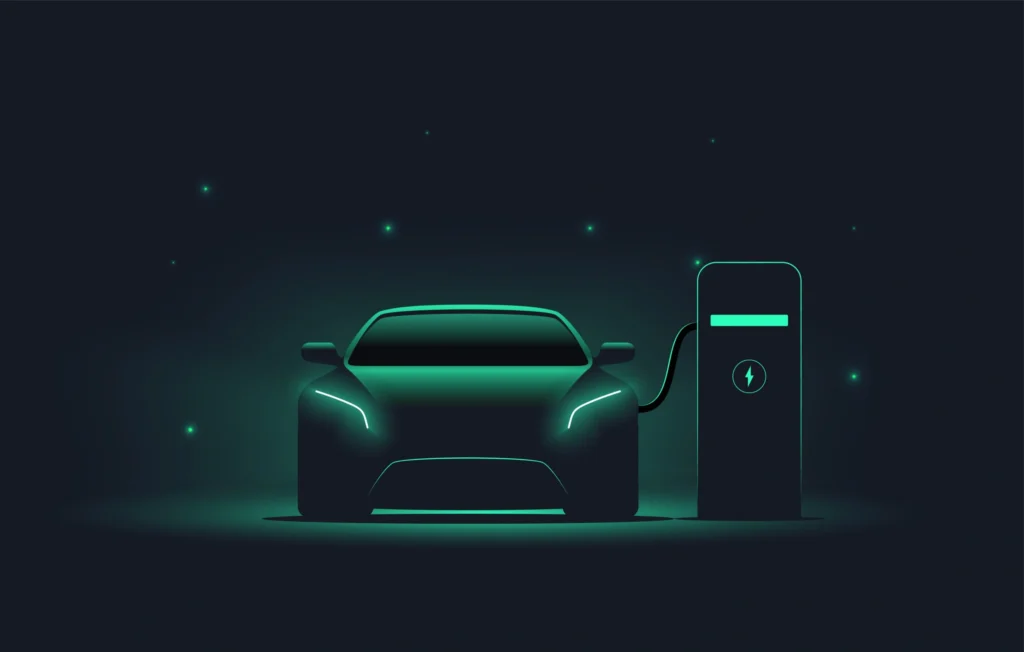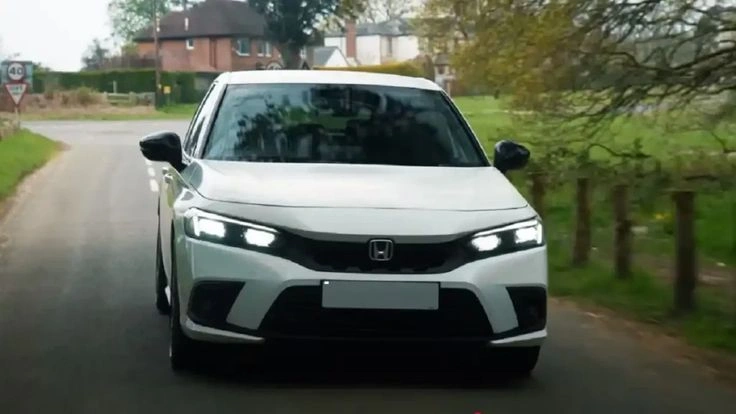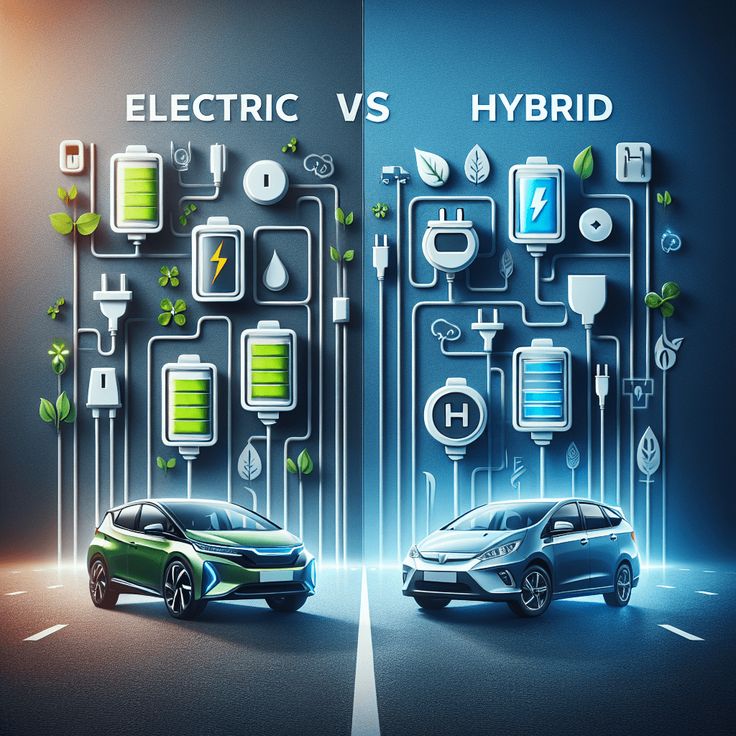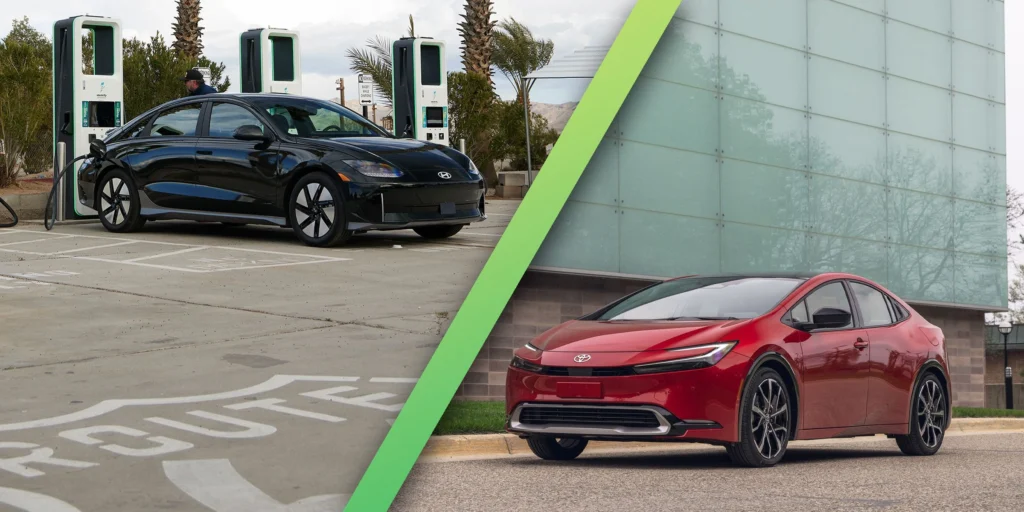As gas prices rise and the push for eco-friendly transportation grows stronger, more drivers are turning toward electric and hybrid vehicles. Both promise reduced emissions and lower fuel costs—but which one fits your lifestyle best?
If you’re considering switching from a gas-powered car in 2025, this guide will help you understand the key differences between electric vehicles (EVs) and hybrid vehicles (HEVs/PHEVs)—so you can make the smartest choice for your budget, driving habits, and environmental values.
⚡ What Is an Electric Vehicle (EV)?

Electric vehicles run 100% on electricity using a rechargeable battery and one or more electric motors. They do not use gasoline at all.
Examples: Tesla Model 3, Nissan Leaf, Ford Mustang Mach-E
Key features:
- Zero tailpipe emissions
- Recharges using home or public charging stations
- Lower maintenance due to fewer moving parts
- Quiet, smooth driving experience
🔄 What Is a Hybrid Vehicle?

Hybrid vehicles combine a gasoline engine with an electric motor. There are two types:
- HEV (Hybrid Electric Vehicle): Gas-powered engine assists with electric motor efficiency (e.g., Toyota Prius)
- PHEV (Plug-in Hybrid Electric Vehicle): Can run short distances on electric power alone and then switch to gas (e.g., Toyota RAV4 Prime, Hyundai Ioniq Plug-in)
🔍 Key Comparisons: Electric vs. Hybrid

Let’s break it down feature by feature:
1. 🌿 Environmental Impact
- EVs: Produce zero tailpipe emissions, making them the best option for reducing carbon footprint.
- Hybrids: Lower emissions than traditional cars, but still burn some fossil fuel.
Winner: EVs (especially when charged using renewable energy)
2. 💰 Cost to Own
- EVs: Higher upfront cost but lower operating costs. Electricity is cheaper than gas, and fewer parts mean reduced maintenance.
- Hybrids: Generally more affordable than EVs upfront. Still require oil changes and engine maintenance.
Winner: Tie — EVs save more in the long run, but hybrids have a lower initial investment.
3. ⚡ Charging vs. Refueling
- EVs: Need access to home or public charging stations. Charging can take from 30 minutes (fast charger) to several hours (Level 1/2).
- Hybrids: HEVs don’t need charging. PHEVs can be charged but can still run on gas when needed.
Winner: Hybrids (if charging infrastructure is limited in your area)
4. 🛣️ Driving Range
- EVs: Most modern EVs offer 200–350+ miles per charge. However, long road trips may require planning for charging stops.
- Hybrids: Longer range due to the combination of electric and gas power. No range anxiety.
Winner: Hybrids for flexibility, EVs are catching up quickly.
5. ⚙️ Maintenance
- EVs: No oil changes, fewer fluids, fewer moving parts = less maintenance and fewer breakdowns.
- Hybrids: Still require traditional engine maintenance but generally less than gas-only cars.
Winner: EVs
6. 🚗 Driving Experience
- EVs: Instant torque = smooth, quiet, and fast acceleration.
- Hybrids: Good fuel efficiency but not as responsive or quiet as EVs.
Winner: EVs for performance and comfort
📌 Which One Should You Choose?
✅ Choose an Electric Vehicle if:
- You have easy access to charging at home or work
- You want zero emissions and minimal maintenance
- You’re ready for a long-term investment in sustainable driving
- You live in a city or suburb with charging infrastructure
✅ Choose a Hybrid Vehicle if:
- You drive long distances frequently or don’t have reliable access to charging
- You want to save on fuel but aren’t ready for full electric
- You’re looking for a more budget-friendly tech-powered vehicle
- You want flexibility in both city and highway driving
Final Thoughts: It Depends on Your Lifestyle
The right vehicle isn’t just about tech—it’s about how you drive, where you live, and what matters most to you.
In 2025, both electric and hybrid vehicles offer smart, sustainable, and money-saving alternatives to traditional cars. Whether you choose an EV for its innovation or a hybrid for its flexibility, you’re making a smarter, greener move either way.
Still unsure?
Compare models side by side or test drive both options before deciding. The future of driving is electric—and you’re already on the right path.

